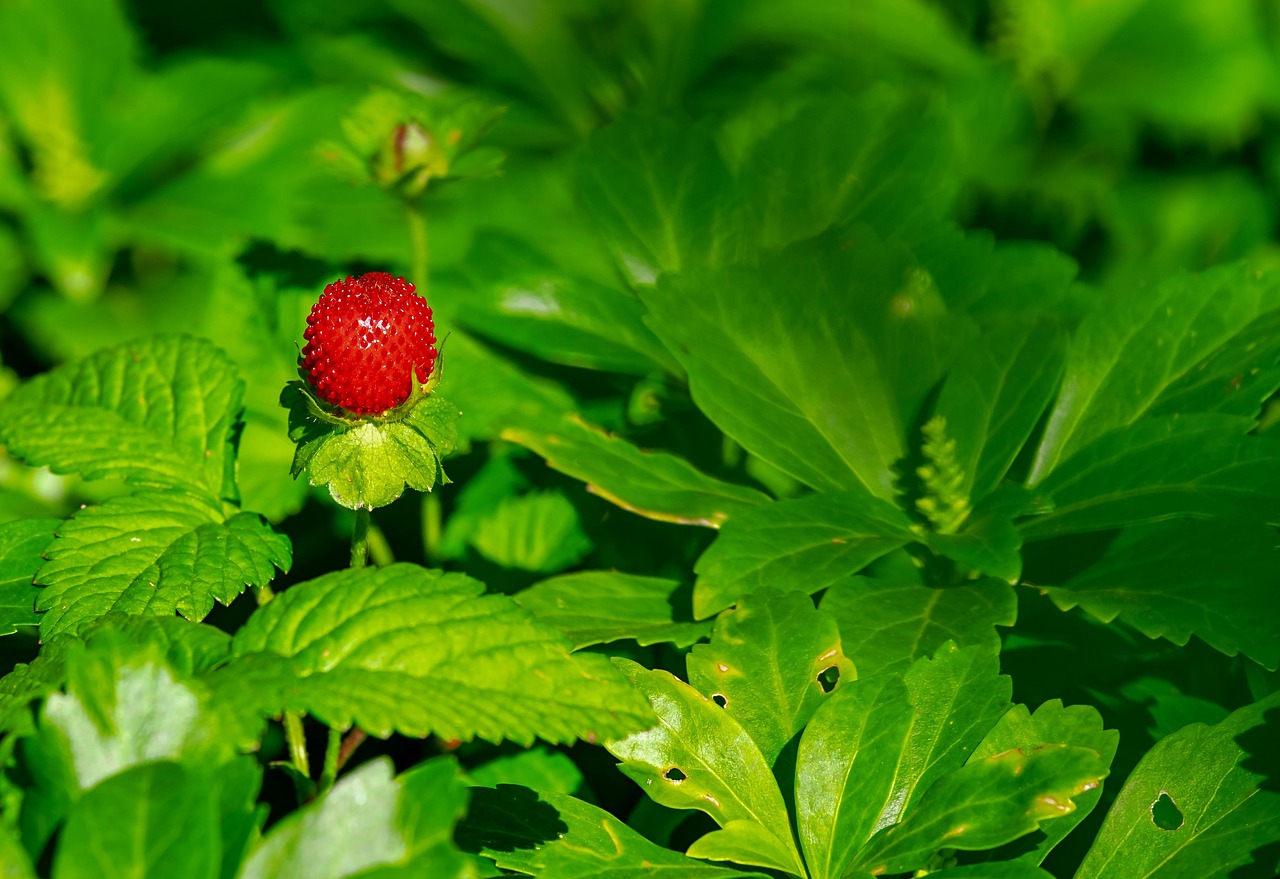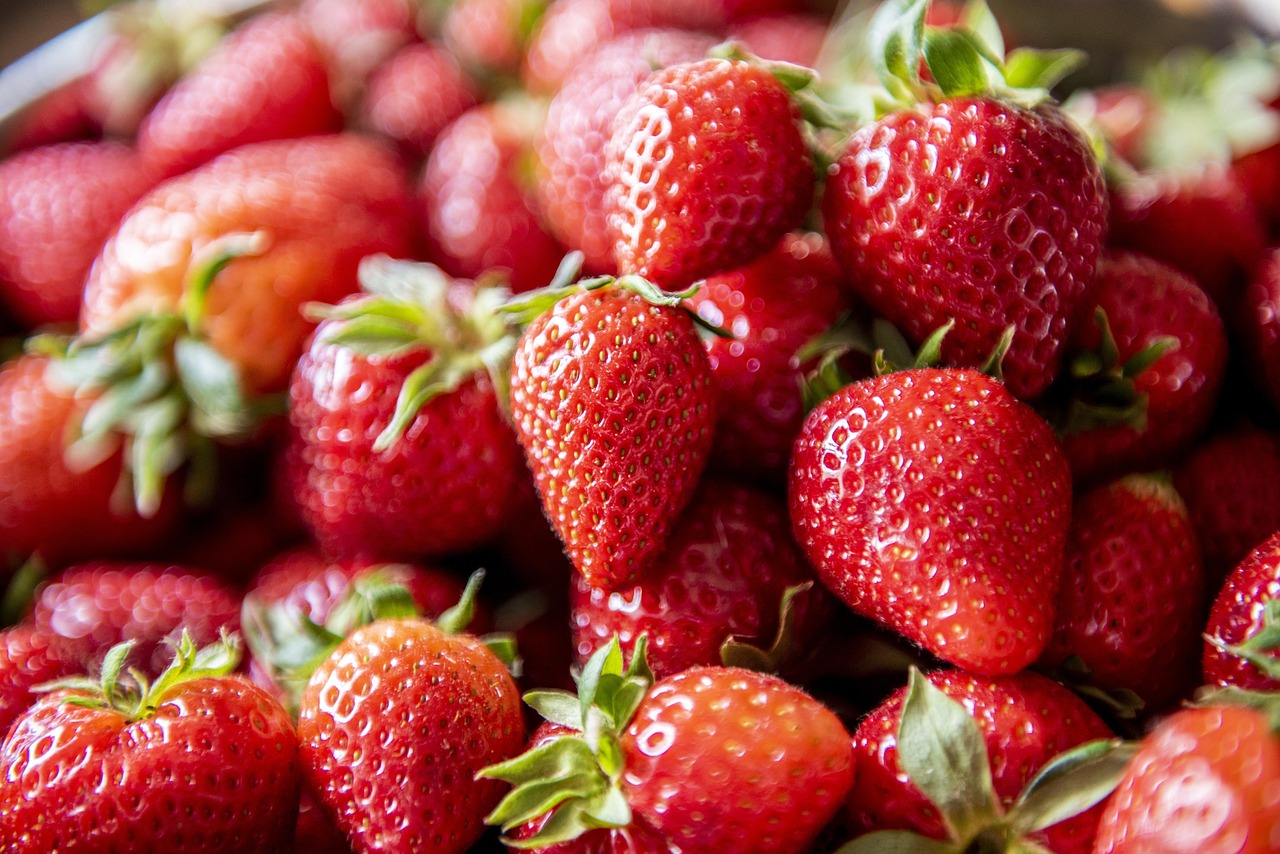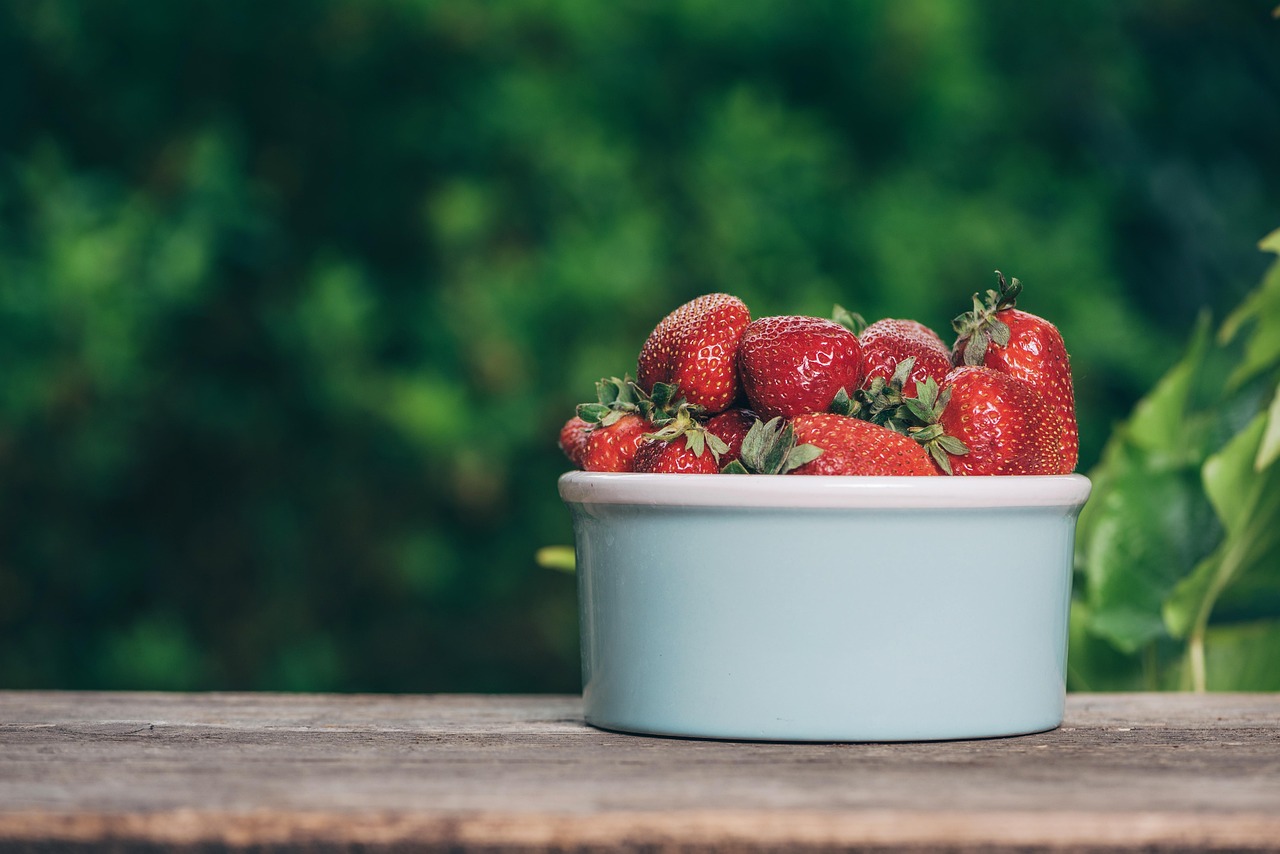Yellowing strawberry leaves are often a sign of chlorosis, which occurs due to nutrient deficiencies, poor soil conditions, or pH imbalances. Diagnosing the cause involves examining the growing conditions and plant health. Treatment may include adjusting soil nutrients, improving drainage, or changing the soil pH.
Understanding Chlorosis in Strawberries

Chlorosis is a common issue faced by strawberry growers. It manifests as yellowing leaves, which can significantly affect plant growth and fruit production. Healthy strawberry plants have vibrant green leaves, which are essential for photosynthesis. When leaves turn yellow, it indicates that the plant is struggling to produce enough chlorophyll.
Several factors contribute to chlorosis in strawberries. Nutrient deficiencies are among the most prevalent causes. Essential nutrients like nitrogen, iron, and magnesium play crucial roles in leaf health. When these nutrients are lacking, the plant cannot perform optimally, leading to yellowing leaves.
Additionally, environmental conditions can impact nutrient availability. For instance, overly wet or dry soil conditions can hinder the plant’s ability to absorb essential nutrients. Similarly, soil pH plays a significant role in nutrient uptake. A pH that is too high or too low can lock out nutrients, making them unavailable to the plant.
Common Causes of Yellowing Leaves
Identifying the specific cause of chlorosis in strawberries is vital for effective treatment. Below are some common reasons why strawberry leaves may turn yellow:
- Nutrient Deficiencies: Lack of key nutrients such as nitrogen, iron, or magnesium.
- Soil pH Imbalance: Soil that is too acidic or too alkaline can affect nutrient absorption.
- Pests and Diseases: Infestations or infections can lead to stress and yellowing leaves.
- Water Stress: Overwatering or underwatering can cause root issues and impact nutrient uptake.
Nutrient Deficiencies Explained
Nutrient deficiencies can be particularly detrimental to strawberry plants. Here are some key nutrients that are often linked to chlorosis:
| Nutrient | Symptoms of Deficiency | Potential Solutions |
|---|---|---|
| Nitrogen | Overall yellowing of older leaves; stunted growth | Add nitrogen-rich fertilizers like urea or compost. |
| Iron | Yellowing between veins of young leaves; veins remain green | Use iron chelates or foliar sprays containing iron. |
| Magnesium | Yellowing at leaf edges; older leaves affected first | Apply magnesium sulfate (Epsom salt) to the soil. |
Monitoring your strawberry plants regularly will help detect these issues early. By understanding the symptoms associated with different nutrient deficiencies, growers can take proactive measures to ensure healthy plant growth.
In addition to nutrient management, it is crucial to consider other factors contributing to chlorosis. Regularly testing soil pH can help identify imbalances that may necessitate corrective actions.
Ultimately, maintaining optimal growing conditions is key to preventing yellowing leaves in strawberries. This includes proper watering practices, adequate sunlight exposure, and regular fertilization based on soil test results. By addressing these factors, growers can promote healthy strawberry plants that yield abundant fruit.
Diagnosing the Problem
Effectively addressing yellowing leaves in strawberries requires accurate diagnosis of the underlying issues. While nutrient deficiencies are a primary concern, it is essential to consider other factors such as pest infestations, diseases, and environmental stressors. Understanding how to identify these problems will lead to more effective treatment.
Identifying Nutrient Deficiencies
To diagnose nutrient deficiencies accurately, growers should observe the patterns of yellowing in the leaves. Different deficiencies exhibit unique symptoms:
- Older Leaves Yellowing: This often indicates a nitrogen deficiency, where the plant mobilizes nitrogen from older leaves to support new growth.
- Interveinal Chlorosis: Yellowing between the veins of young leaves typically points to iron deficiency.
- Leaf Edge Yellowing: If older leaves show yellowing at the edges, magnesium deficiency may be the cause.
In addition to visual inspection, conducting a soil test is advisable to determine nutrient levels and pH balance. Soil tests provide valuable insights that guide fertilization and amendments.
Examining Environmental Conditions
Environmental factors can also contribute to chlorosis in strawberry plants. Below are some conditions to monitor:
- Soil Moisture: Ensure that the soil is consistently moist but not waterlogged. Overwatering can lead to root rot, while underwatering can cause stress.
- Sunlight Exposure: Strawberries require full sunlight for optimal growth. Insufficient light can weaken plants and lead to chlorosis.
- Temperature Extremes: High temperatures can stress plants, while cold spells can damage them. Monitor weather conditions and provide necessary protections.
Pest and Disease Considerations
Pests and diseases pose significant threats to strawberry health, often leading to yellowing leaves. Identifying these issues early can prevent further damage.
Pest Identification
Common pests that affect strawberries include:
- Aphids: These small insects suck sap from the leaves, causing yellowing and distortion.
- Spider Mites: Tiny yet harmful, spider mites create stippling on leaves, leading to yellowing.
- Whiteflies: Similar to aphids, whiteflies feed on plant sap, causing weakening and yellowing of the foliage.
Regularly inspecting plants for these pests is crucial. If an infestation occurs, applying insecticidal soap or neem oil can help control their populations effectively.
Disease Symptoms
Diseases can also cause yellowing leaves in strawberries. Some common diseases include:
- Powdery Mildew: This fungal disease results in white powdery spots on leaves and can lead to yellowing.
- Verticillium Wilt: A serious soil-borne disease that causes wilting and yellowing leaves, often leading to plant death.
- Botrytis Gray Mold: This disease primarily affects fruit but can cause leaf yellowing as the plant weakens.
If disease symptoms are detected, proper management practices should be implemented. This may include removing affected plants, improving air circulation, and applying fungicides when necessary.

Preventive Measures
Preventing chlorosis requires a proactive approach. Here are some strategies that can help maintain healthy strawberry plants:
- Soil Testing: Regularly test soil for nutrient levels and pH balance to make informed decisions on fertilization.
- Cultural Practices: Implement crop rotation and avoid planting strawberries in the same location year after year to reduce disease risk.
- Pest Management: Utilize integrated pest management (IPM) techniques to keep pest populations under control without harming beneficial insects.
By taking these preventive measures, growers can significantly reduce the likelihood of encountering yellowing leaves in their strawberry plants.
Treatment Options for Chlorosis
Once the causes of yellowing strawberry leaves have been identified, effective treatment options can be implemented. Addressing chlorosis requires a combination of nutrient supplementation, environmental adjustments, and pest or disease management. Each treatment should be tailored to the specific cause of the chlorosis.
Nutrient Supplementation
Restoring nutrient balance in the soil is crucial for treating chlorosis. Here are some common methods to address nutrient deficiencies:
- Fertilizers: Use balanced fertilizers that contain nitrogen, phosphorus, and potassium (NPK). For nitrogen deficiencies, consider applying urea or ammonium nitrate. For iron deficiencies, iron chelates or foliar sprays can be effective.
- Organic Amendments: Incorporate organic matter such as compost or well-rotted manure into the soil to improve its nutrient profile and overall health.
- Micronutrient Supplements: In addition to macronutrients, consider applying micronutrients like magnesium and iron in the form of sprays or soil amendments if deficiencies are suspected.
Applying these supplements during the growing season can help replenish nutrient levels and promote healthier foliage.
Adjusting Soil pH
Soil pH significantly affects nutrient availability. Strawberry plants thrive in slightly acidic soil with a pH between 5.5 and 6.5. If soil tests indicate an unbalanced pH, corrective measures should be taken:
- To Lower pH: Incorporate elemental sulfur or peat moss into the soil. This will help acidify the soil over time.
- To Raise pH: Add lime to increase soil alkalinity, ensuring to monitor the application rates based on soil test recommendations.
Making gradual adjustments is key, as sudden changes to soil pH can shock plants and worsen chlorosis.
Water Management

Proper water management is essential for preventing and treating chlorosis in strawberries. Both overwatering and underwatering can lead to stress and nutrient uptake issues. Here are some strategies:
- Consistent Watering Schedule: Establish a regular watering schedule that maintains consistent soil moisture without causing saturation.
- Draining Excess Water: Ensure that the planting area has adequate drainage to prevent waterlogging, which can cause root rot and hinder nutrient absorption.
- Mulching: Apply mulch around the plants to retain moisture and regulate soil temperature, which can help reduce stress on the plants.
Pest and Disease Control Measures
If pests or diseases are identified as contributors to yellowing leaves, appropriate control measures must be taken. Integrated pest management (IPM) strategies can help minimize damage while protecting beneficial organisms:
Pest Control Strategies
- Cultural Controls: Rotate crops and maintain cleanliness in the garden to reduce pest habitats.
- Biological Controls: Introduce natural predators like ladybugs or lacewings that feed on aphids and other pests.
- Chemical Controls: Use insecticides judiciously, selecting products that target specific pests while minimizing harm to beneficial insects.
Disease Management Techniques
- Removal of Infected Plants: Promptly remove and dispose of any diseased plants to prevent the spread of pathogens.
- Fungicide Application: Apply fungicides as a preventive measure or at the first sign of disease symptoms. Follow label instructions carefully.
- Cultural Practices: Improve air circulation around plants by proper spacing and pruning, which can help reduce moisture buildup that fosters disease development.
Implementing these treatment strategies can significantly improve the health of strawberry plants suffering from chlorosis, ensuring robust growth and improved fruit yield.
Long-Term Care for Healthy Strawberry Plants

Maintaining healthy strawberry plants requires ongoing care and attention beyond just addressing chlorosis. Establishing a consistent care routine can significantly enhance plant vitality and fruit production. Here are some additional practices to consider:
- Regular Monitoring: Keep a close eye on your strawberry plants throughout the growing season. Look for any signs of yellowing leaves, wilting, or unusual growth patterns. Early detection can lead to timely interventions.
- Seasonal Fertilization: Apply fertilizers at the beginning of each growing season based on soil test results. This ensures that plants receive the necessary nutrients when they need them most.
- Proper Pruning: Regularly prune your strawberry plants to remove dead or diseased foliage. This not only helps prevent disease spread but also promotes better air circulation.
- Crop Rotation: Rotate strawberry crops every few years to reduce the risk of soil-borne diseases and nutrient depletion. This practice helps maintain soil health and productivity.
Understanding the Role of Soil Health
Soil health is fundamental to the success of strawberry cultivation. Healthy soil provides nutrients, retains moisture, and supports beneficial microorganisms. Here are some tips for maintaining soil health:
- Organic Matter Addition: Regularly add organic matter such as compost to improve soil structure and fertility. This enhances nutrient availability and moisture retention.
- Soil Aeration: Ensure that soil is well-aerated to promote root growth and nutrient uptake. Compacted soil can hinder plant development and lead to stress.
- Cover Cropping: Utilize cover crops during off-seasons to protect the soil from erosion, add nutrients, and suppress weeds. Cover crops also enhance biodiversity in the soil ecosystem.
Final Thoughts
Yellowing leaves in strawberries can be a frustrating issue for growers, but with proper diagnosis and treatment, it is possible to restore plant health and vigor. Understanding the causes of chlorosis—from nutrient deficiencies to pests and diseases—enables growers to take informed actions.
Implementing preventive measures such as regular soil testing, appropriate watering practices, and integrated pest management can significantly reduce the risk of chlorosis in strawberry plants. Moreover, focusing on long-term soil health through organic amendments and crop rotation will contribute to sustainable strawberry production.
By taking a holistic approach to strawberry cultivation, gardeners can enjoy healthy plants that yield delicious fruit. With vigilance, care, and the right strategies, yellowing leaves can be effectively managed, allowing strawberries to thrive in your garden or farm.
